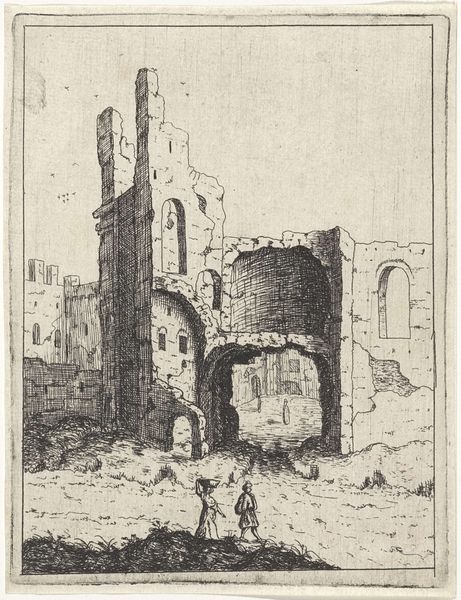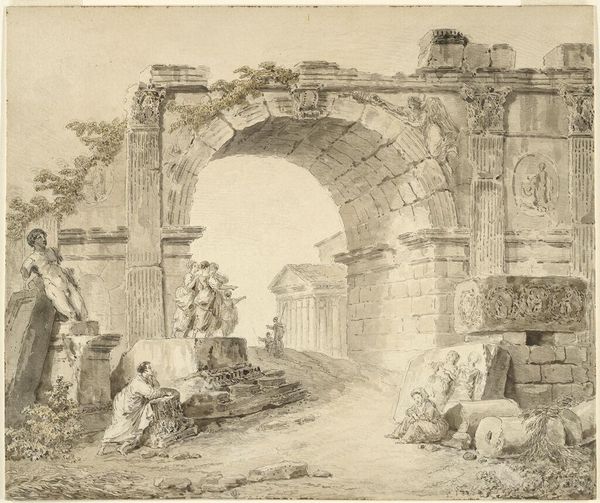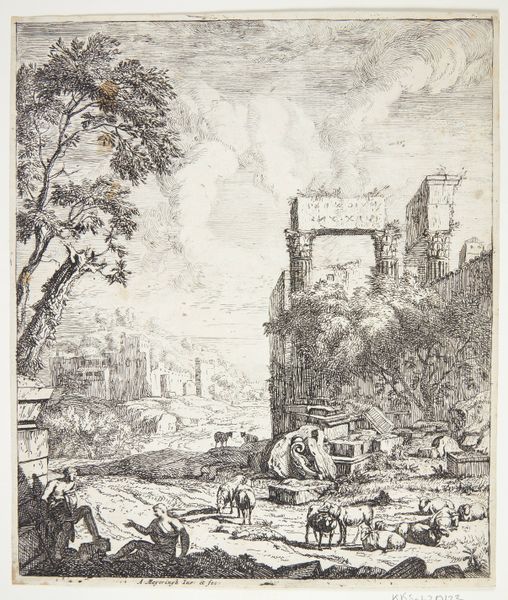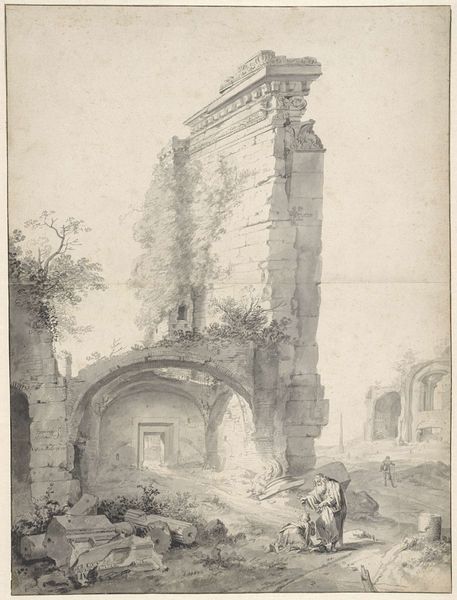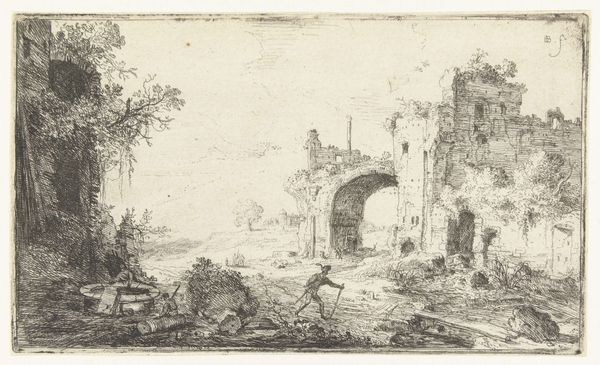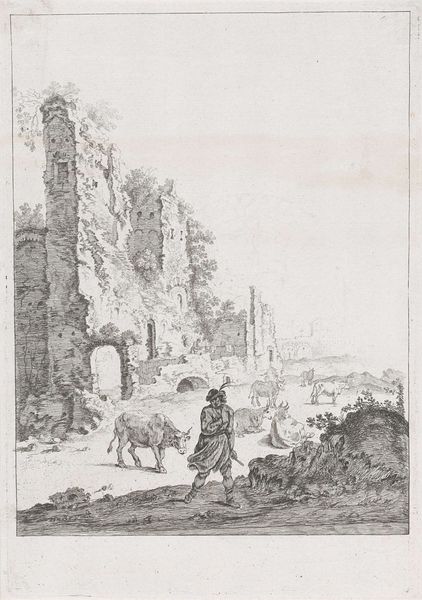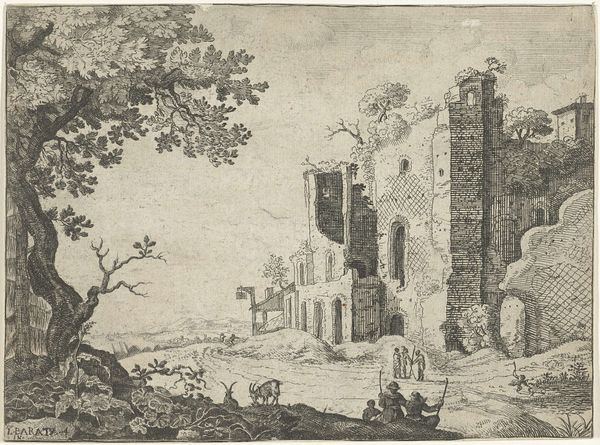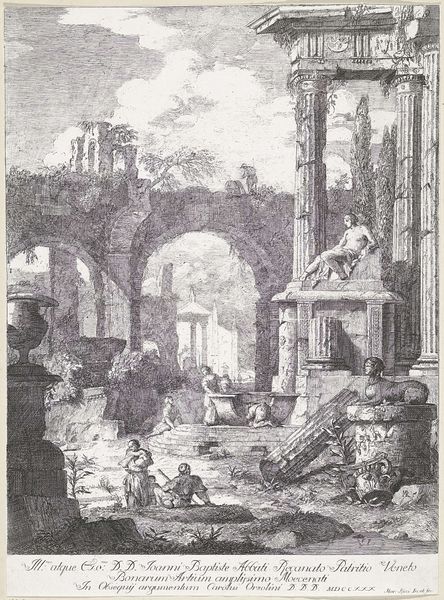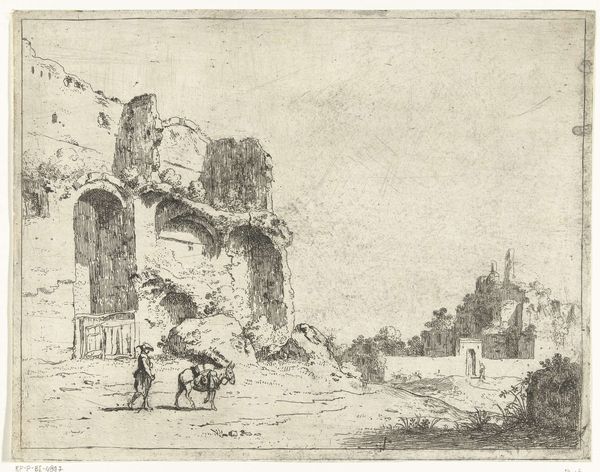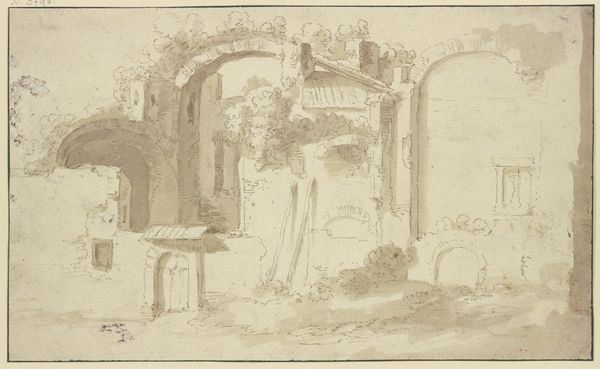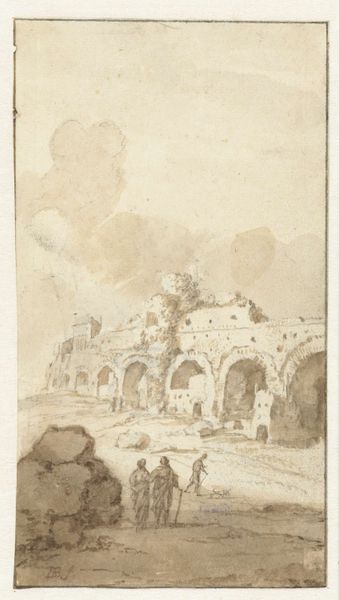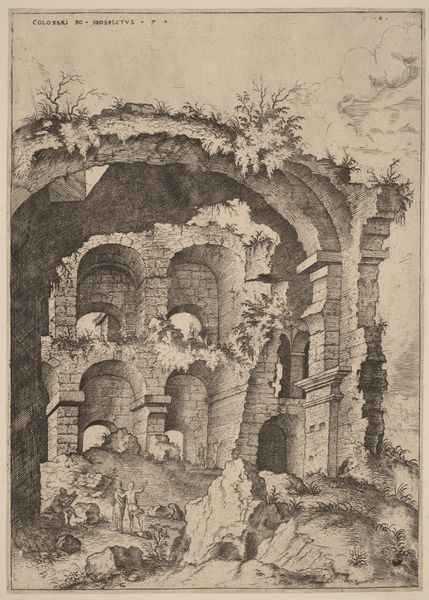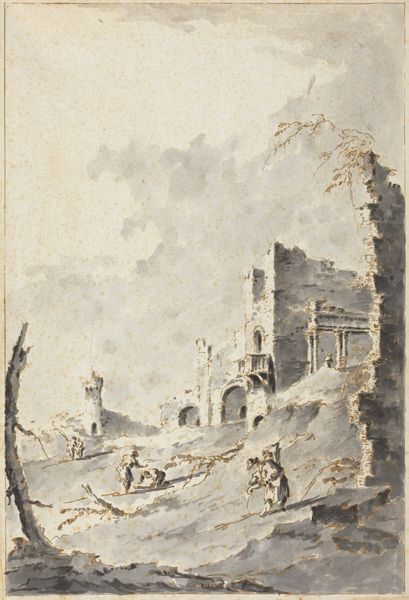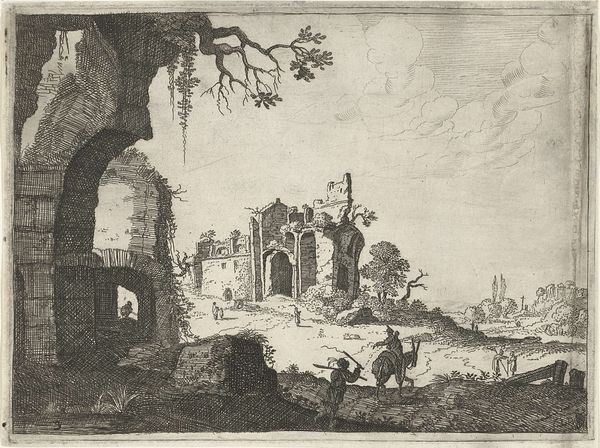
Twee ruiters pleisteren op de voorhoof van een herberg 1641 - 1685
0:00
0:00
drawing, ink, pen
#
drawing
#
baroque
#
pen sketch
#
pencil sketch
#
landscape
#
ink
#
pen-ink sketch
#
pen work
#
pen
#
genre-painting
Dimensions: height 244 mm, width 192 mm
Copyright: Rijks Museum: Open Domain
Curator: It’s a tranquil scene, almost dreamlike. The muted tones and delicate lines give it a very subdued quality. Editor: Indeed. We’re looking at "Two Riders Resting at the Entrance to an Inn," a pen and ink drawing by Johann Heinrich Roos, made sometime between 1641 and 1685. It's currently held in the Rijksmuseum collection. For me, it's fascinating because it appears to be quite simple. But it showcases how everyday life was often deeply rooted in socio-economic activities and institutions. Curator: What’s immediately striking to me is Roos’s apparent interest in architectural detail versus his depiction of the figures themselves. It suggests the significance of the setting, of the Inn itself as a hub of social and economic exchange. Notice, for example, the precise rendering of the brickwork and the play of light across the building. This speaks to the function of materials, the act of producing not only art but the structures within it. Editor: I think that's key. Inns were public spaces, central to travel and commerce. It makes me think about how landscape, in this period, was increasingly viewed as both picturesque and property. The depiction isn’t just of a place to rest, but also, perhaps, a marker of territory, or of trade routes. The fact that it's a drawing, not a painting, adds another layer for me. The materiality itself is more accessible, less 'high art'. It blurs that boundary, focusing on a social realism that painting often stylized. Curator: It's evident Roos prioritized line and form in creating depth. The cross-hatching adds shadows. It hints to the textures of the stone. I wonder how much of that architectural precision reflects contemporary building practices. Or perhaps, it mirrors the artist’s skill and awareness of different artisanal crafts of that era. Editor: The inclusion of everyday figures, dogs resting in the shade, almost certainly speaks to a larger narrative, of the cultural values placed on leisure, and on animals as both working and companion species. How does it reinforce or challenge the traditional imagery of genre paintings, particularly with its lack of vibrant color or detailed finish? Curator: By stripping away the opulence of colour, Roos places emphasis back on form and structure. Perhaps elevating these subjects beyond simple everyday encounters. He compels the viewer to reconsider what elements constitute true art. Editor: And I am left considering the larger picture—the politics of representation and who has the power to represent these moments. It invites reflections on the socio-economic status of artists at this time. Thank you for highlighting those aspects of this work. Curator: Likewise!
Comments
No comments
Be the first to comment and join the conversation on the ultimate creative platform.
